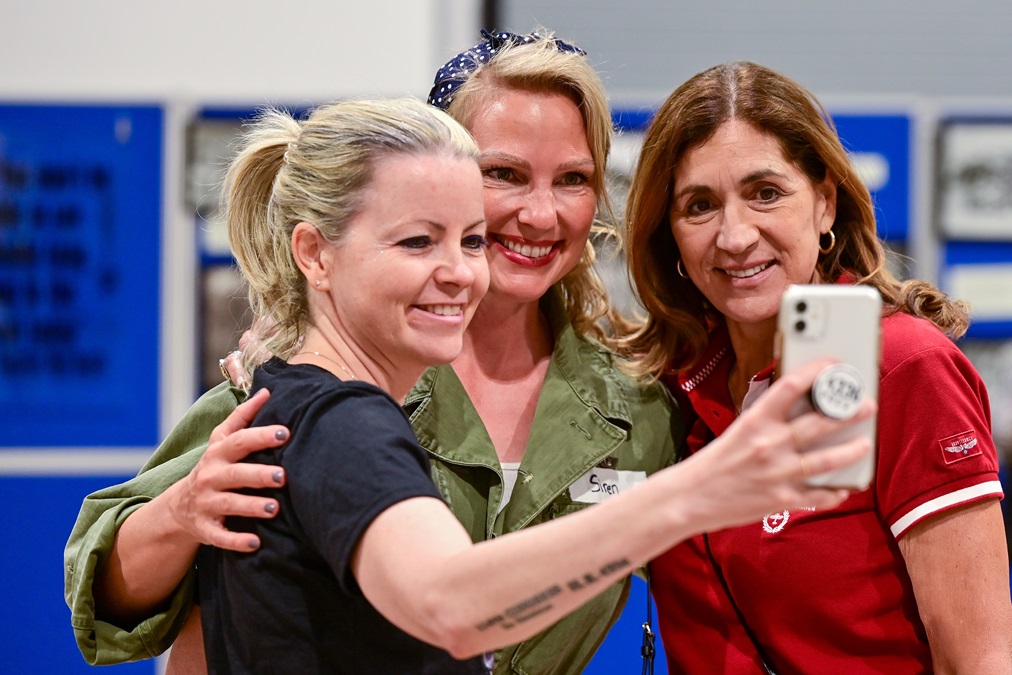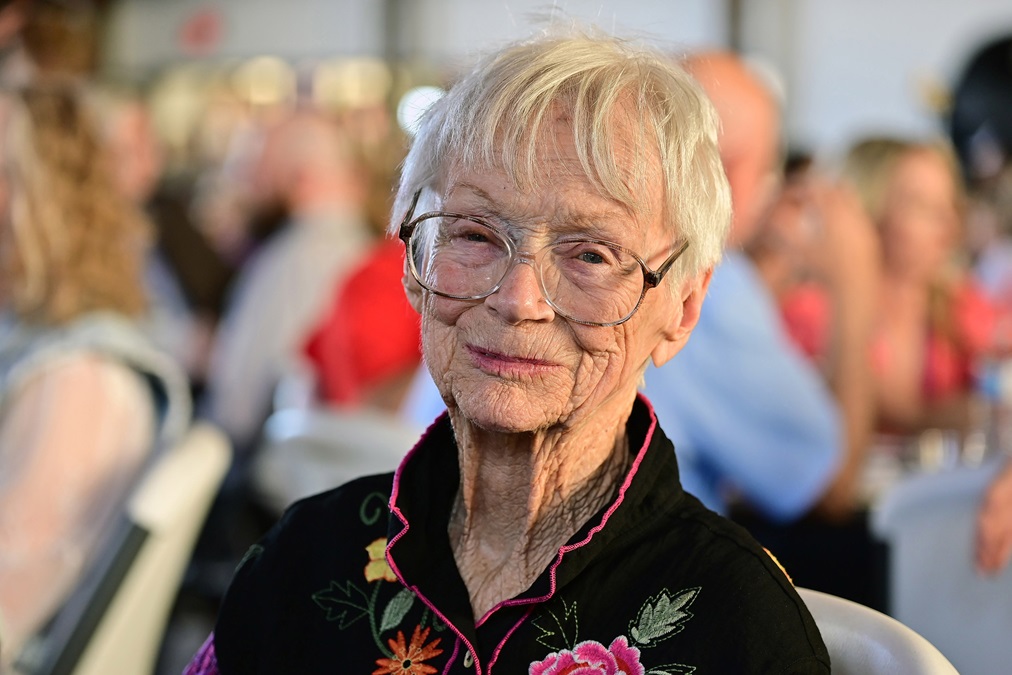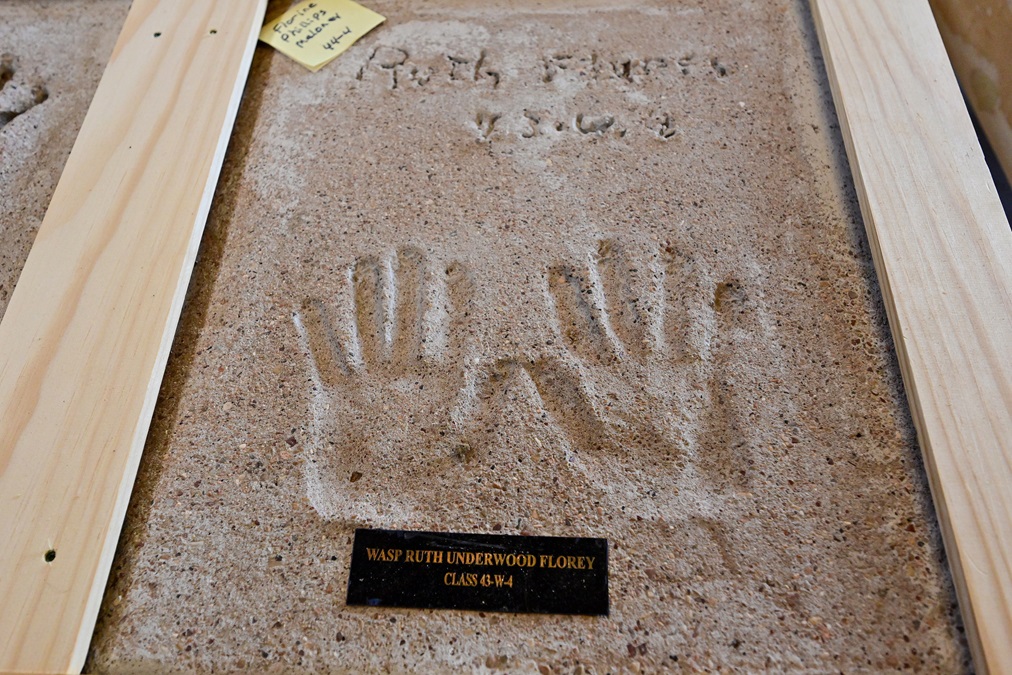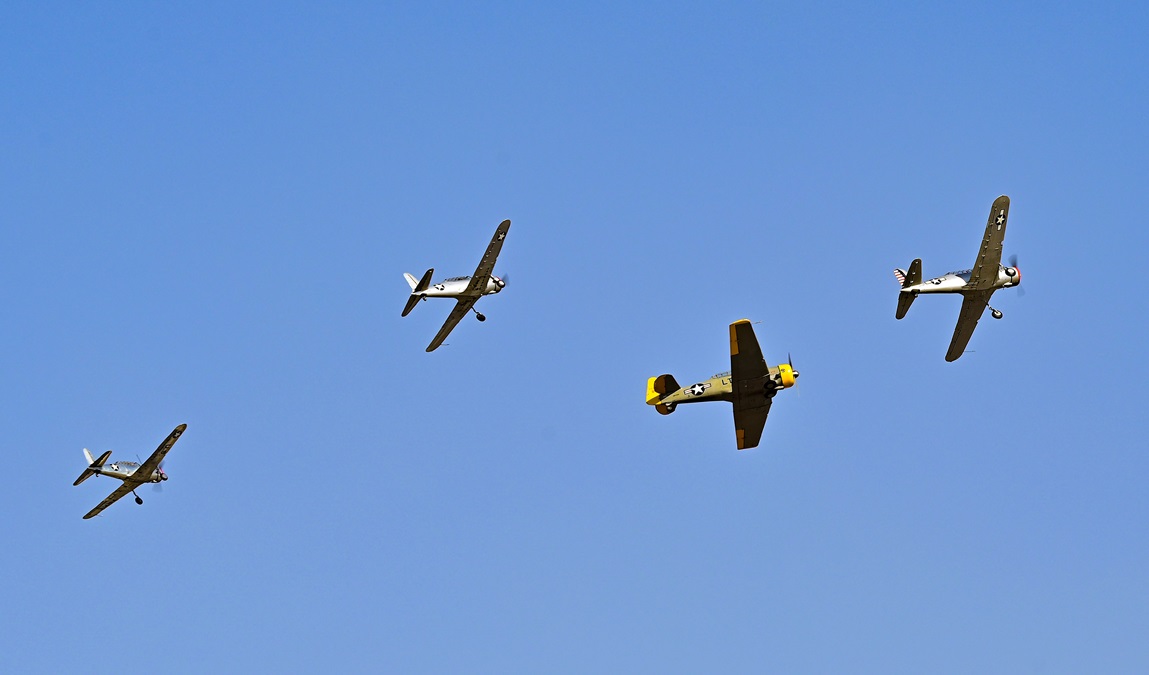80 years of inspiration
WASP eightieth homecoming at Avenger Field draws an admiring crowd
Eighty years after they first soared from the windy runways at Avenger Field in Sweetwater, Texas, the Women Airforce Service Pilots (WASP) continue to inspire military and civilian pilots around the world.
About 2,000 people traveled to Sweetwater this past weekend to celebrate the legacy of the WASP on the occasion of their eightieth homecoming. And, while just one WASP came to the event, WASP family members, aviation history buffs, and visitors celebrated the all-female squadron who served their country during World War II. The sole WASP in attendance was Shirley Chase Kruse, who was a flight test pilot. Flanked by members of the U.S. Air Force, Kruse greeted all who came up to her.
The WASP, headed by Jacqueline Cochran and Nancy Love, trained at Avenger Field beginning in 1943 to fly single- and multiengine piston aircraft “the military way.” The goal was to use the women in the war effort to free up male pilots for combat duty overseas. After graduating from the program, the WASP ferried aircraft, piloted tow aircraft for aerial targets, and performed other flying duties including tracking and searchlight missions and simulated strafing. They were assigned to established bases around the United States as civilians attached to the Army Air Force.
One thousand seventy-four women graduated the program. Thirty-eight died in training or on active duty. The WASP flew more than 60 million miles and ferried 77 different types of aircraft.
The WASP were disbanded at the conclusion of the war, and they did not receive military benefits and were not allowed to be interred in Arlington National Cemetery because they had been designated civilians. In 2009, President Barack Obama awarded the WASP the Congressional Gold Medal for service to their country.
“I don’t think people understood what it took for [the WASP] to become a pilot in those days,” said Molly Kelly of Fredericksburg, Texas, who drove to Sweetwater for the homecoming. Kelly is a private pilot, and her late husband, Barry, flew a Lockheed S-3 Viking for the U.S. Navy. “They were the trailblazers.”
A fleet of aircraft arrayed on the flight line at Sweetwater represented many of the types of aircraft the women flew. The Douglas C–47 Skytrains That’s All Brother and Ready 4 Duty had a line of visitors waiting to climb up a set of airstairs and look inside. Both airplanes are operated by wings of the Commemorative Air Force and are on tour in 2022. Private owners also brought pristine examples of wartime aircraft, including James Bohannon Jr.’s North American P–51 Mustang.
The National WASP WWII Museum at Avenger Field has flying examples of four of the five types of aircraft that the women trained in: a Boeing PT–17 a Stearman, Fairchild PT19A, and a Vultee BT13, which were flown for primary and basic training; and an ME UC–78 or Cessna Bobcat, for multiengine training. The museum is raising money to acquire a North American T–6 to be used for cross-country, formation, and instrument training, to round out its collection, according to volunteer David Townsend.
“The influence of the WASP lives on in every legacy pilot in the military and commercial aviation regardless of age, gender, or ethnicity. They are the female pilots that started building the bridge for all women,” said Lisa Taylor, executive director of the National WASP WWII Museum. The museum will continue to host a yearly homecoming celebration, and in 2023 it will be held the last weekend in April, she said.
















